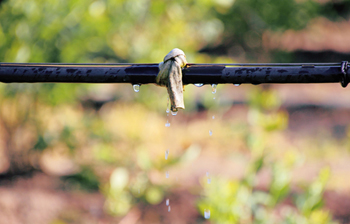Many of California’s major farming regions get very little rain, so irrigation is critical. As a result, 80 percent of the state’s fresh water goes to agriculture.

Heather Cooley, the director of the water program at the non-profit Pacific Institute says many farmers are replacing traditional furrow irrigation, where the rows between crops are simply flooded, with highly efficient drip irrigation systems.
COOLEY: “You’re also seeing more farmers adopt scientific irrigation scheduling, where they’re looking at either, soil type or they’re looking at weather conditions to determine when to water and how much to water.”
But not all California farmers have adopted the new techniques.
COOLEY: “These efficiency improvements require an upfront investment. They may provide returns over the life of the device, but making that transition can be very difficult.”
If all California farmers implemented efficient irrigation practices, Cooley says it could reduce agricultural water use by about 15 percent. Cooley says incentives and technical support would help farmers make this transition. Given climate projections, it is becoming even more important for California farmers to conserve water since the future is expected to get hotter and drier.
Reporting credit: ChavoBart Digital Media.
Photo: Close up of drip irrigation (copyright protected).
More Resources
The untapped potential of California’s water supply
The multiple benefits of water efficiency for California agriculture